Our mission also includes recognizing the many wonderful chefs and home cooks who dedicate themselves to creating delicious meals for their families or acclaimed restaurants worldwide.
We treasure any contributions you would like to make to our blog, or if you have a family recipe you'd like to share with our community, please reach out at [email protected]. You are amazing, and so should your tasty cooking!
For now, love yourself and enjoy this one ...
Now love yourself and enjoy this one ...
This fool-proof corn on the cob recipe is both simple and delicious!
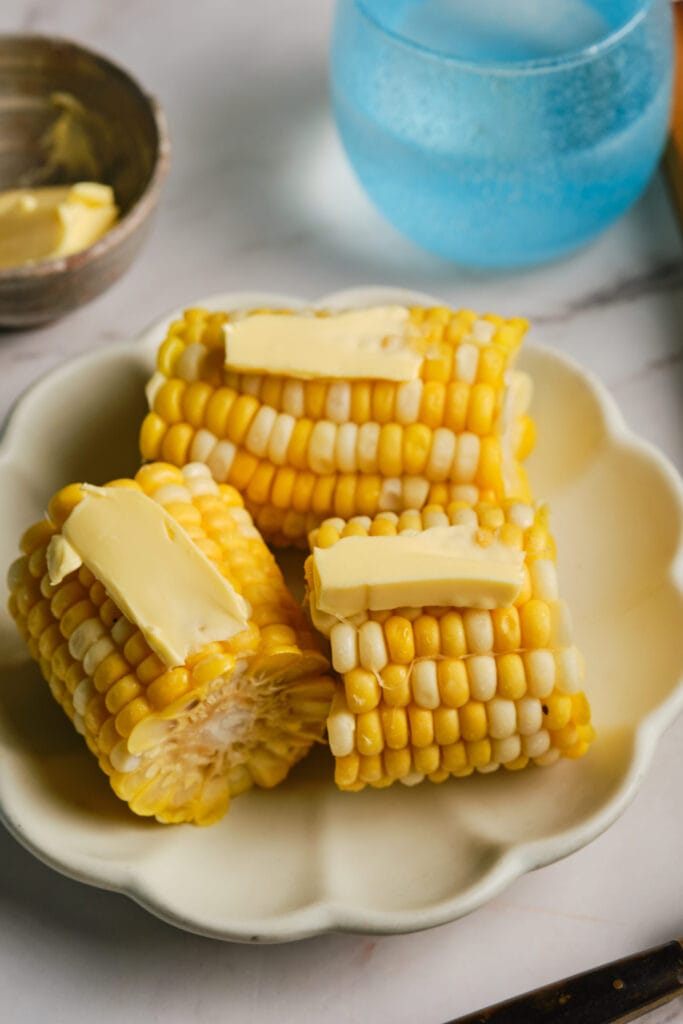
Table of Contents
Corn on the cob is typically a summer treat, but it doesn’t have to be. When it’s in season, I like to buy my corn in bulk. I then store the corn in freezer safe bags so I can enjoy the taste of sunshine and grillouts in the dead of winter. Even better, this frozen corn on the cob recipe is deliciously simple so you can make this any day of the week.
While I do have more flavor-forward corn on the cob recipes, you can’t go wrong with corn’s naturally crunchy and sweet taste. This is as simple as it gets. All you need to do is brush the corn with your favorite butter. I’m partial to cultured butter myself, but you do you.
Is Corn on the cob Healthy?
You bet it’s healthy! Sometimes, corn gets bad rap because we use corn-sourced ingredients in a lot of junk food, but it’s an amazing grain. It’s got plenty of insoluble fiber and loads of nutrients, like B Vitamins, Potassium, and Vitamin A. The only “unhealthy” ingredient is butter, but that’s another food that is unjustly demonized. When enjoyed in moderation, it provides healthy fats (like conjugated linoleic acid) that contain anti-cancer properties. In fact, some studies show that the conjugated linoleic acid in butter helps with weight management. Butter also contains butyrate which helps boost metabolisms and reduce inflammation. However, if you’re vegan or just aren’t convinced that butter can be healthy, there are plenty of dairy-free butter out there.
Freezing for freshness
If you want the tastiest, juiciest corn during a cold, grill-less winter, you’ll want to freeze it while it’s as fresh as possible. You could just freeze them without doing a thing, but I have a suggestion for you. Try blanching the corn first. Why blanch? Well, the blanching prevents the enzymes from breaking down the corn’s flavor, color, and texture. However, be sure to cool the corn right away—a bowl of ice water should work. This ensures the kernels stay plump and sweet. Once it’s cooled, store it in a freezer-safe bag. Give it a try!
INGREDIENTS
- 4 ears corn (frozen, on the cob and without husks/silks)
- 4 tbsp butter
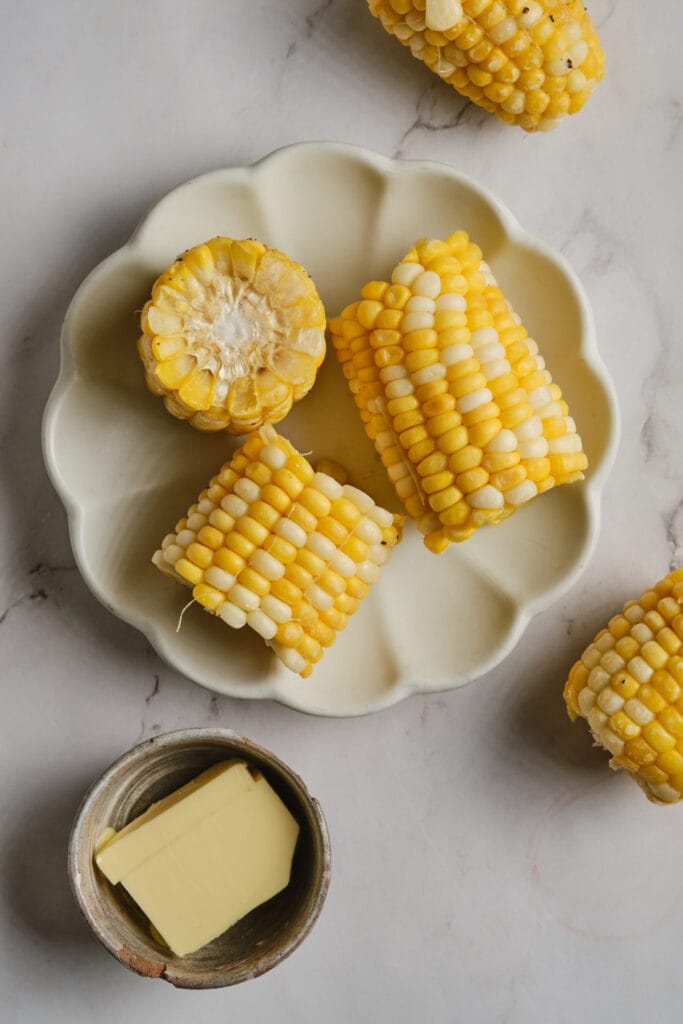
INSTRUCTIONS
Boil Water
Fill a large pot with water and bring it to a boil for the corn.
Cook Corn
Drop the frozen corn into boiling water and cook until the kernels are tender.
Butter Up
Remove the corn, pat dry, butter each cob, and get ready to enjoy.
Serve
Plate your perfectly cooked corn
Devour!
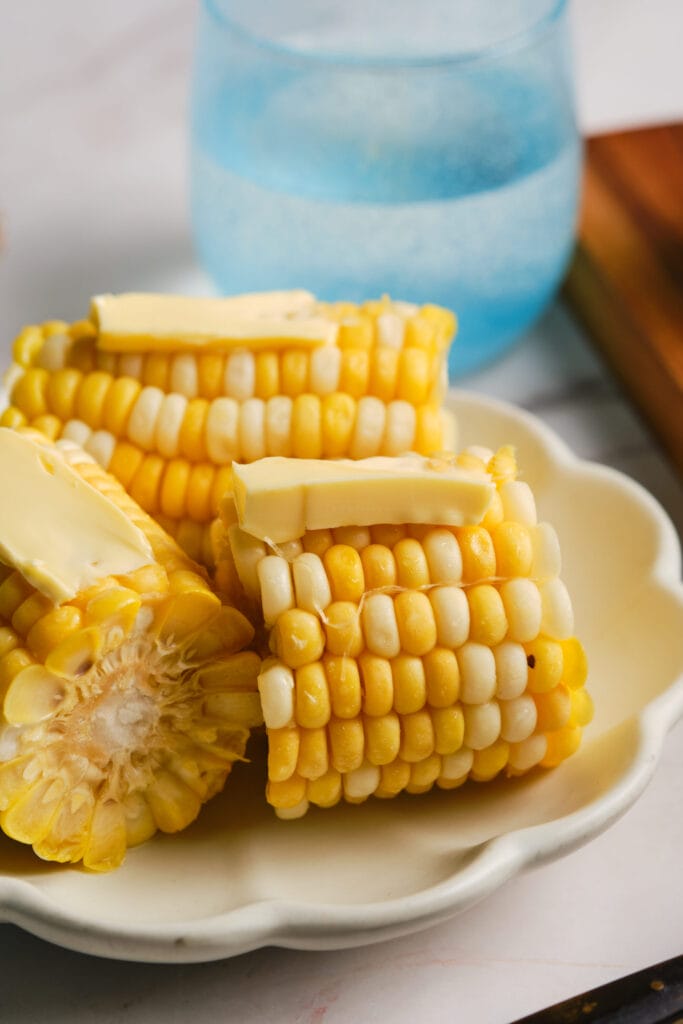
FAQs & Tips
If you have leftovers, the corn should be good for 3 to 5 days in the fridge. You can store them in an airtight container or foil. However, I wouldn’t recommend re-freezing the corn on the cob.
The beauty of this recipe is that it’s a blank canvas! Add whatever seasoning you like. One of my faves is Old Bay seasoning or even just a bit of garlic powder.
Sure, but don’t overcrowd your pot. Otherwise, the corn won’t cook evenly.
If there are only a few shriveled kernels, I wouldn’t worry. But if most of the corn looks as puckered as fingers in a bathtub, don’t use it.
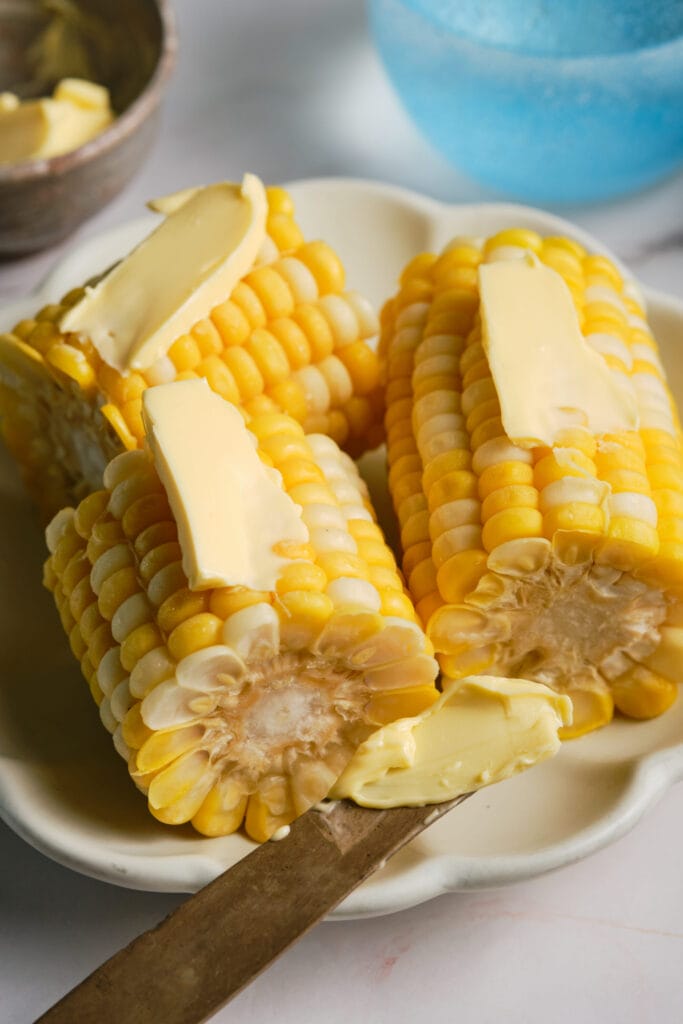
Serving Suggestions
Well, of course, you know what I’m going to suggest you have with corn on the cob— burgers! And more burgers! I also love pairing corn on the cob with seafood, especially shrimp. Whether you like them sauteed or air fried, I’ve got plenty of recipes to choose from. For something more decadent, serve the corn with some mouth-wateringly delicious lobster rolls.
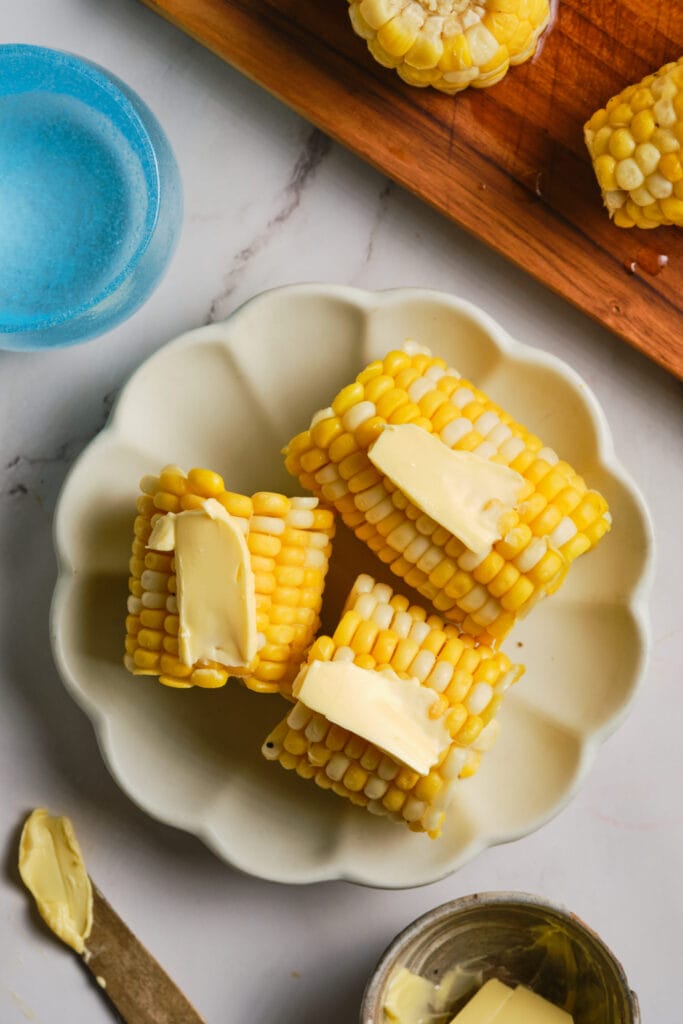
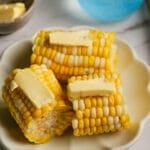
How To Cook Frozen Corn On The Cob
Ingredients
- 4 ears corn frozen, on the cob and without husks/silks
- 4 tbsp butter
Instructions
- Fill a large saucepan halfway with water and bring it to a rolling boil over medium-high heat.
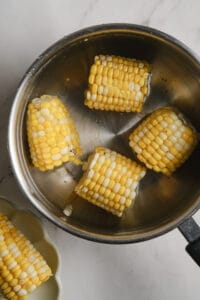
- Gently place the frozen corn into the boiling water, cover the saucepan, and wait for the water to boil again. Once boiling, uncover and cook the corn for 5 minutes or until the kernels are tender.
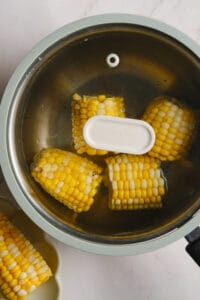
- Carefully remove the corn from the water and let it dry on a cutting board. Serve the corn on a plate with a generous spread of butter on each cob.

- DEVOUR!
Nutrition
The post How To Cook Frozen Corn On The Cob appeared first on Food Faith Fitness.
References:
By: FoodfaithfitnessTitle: How To Cook Frozen Corn On The Cob
Sourced From: www.foodfaithfitness.com/how-to-cook-frozen-corn-on-the-cob/
Published Date: Thu, 14 Mar 2024 11:54:40 +0000
Frequently Asked Questions
How to make herbal remedies at home?
Making herbal remedies at home is easy. All you need is fresh herbs, water, salt, and sugar. You can use any herb, depending on what you want to create.
For example, choose mint, basil, chamomile, or lemon balm to make a soothing tea. If you want to make a cooling drink, try rosemary, thyme, lavender, or eucalyptus.
All you need to do is put all the ingredients into a pot and boil them until they become soft. Strain out the herbs and serve hot.
Add honey to the boiling mixture to make a tonic drink. Honey is a preservative and will keep your herbal remedy fresh for longer.
You can also combine two or three herbs to make a more potent brew. For instance, you could mix equal parts of garlic and ginger to make a powerful antiseptic. Or you can combine equal amounts of turmeric and ginger to make a potent immune booster.
Soak a clean cloth in warm water and place it over the affected area to make a compress. Leave it for 10 minutes before removing it. Do this every day until the swelling goes down.
Make sure you consult your doctor first before using herbal remedies. Some plants may interact negatively with other medications. Also, don't take large quantities of herbs because they can cause side effects.
What herb is best for healing?
Herbs are a fantastic way to help heal our bodies. Herbal medicine has been used since ancient times and continues to grow today. There are thousands of herbs known to cure various ailments.
Some herbs are excellent for treating colds and flu, while others can treat anxiety, depression, arthritis, cancer, diabetes, heart disease, and more.
There are also herbal remedies for skin care, hair loss, weight loss, sexual health, energy, sleep, digestion, and much more.
The list goes on and on. But one herb stands above them all regarding its ability to heal. That herb is called aloe vera.
Aloe Vera is considered to be the world's most powerful healer. For centuries it has helped people heal themselves naturally without any side effects.
It's incredible how well aloe vera works. It's even better than prescription drugs and surgery.
In addition to its natural healing properties, aloe vera is highly versatile and can be used in almost any area of life, including food, beauty products, and household cleaning supplies.
You may not realize this, but aloe vera contains hundreds of active compounds, which include vitamins A, C, E, B1, B2, B3, B6, folic acid, calcium, magnesium, iron, zinc, copper, sulfur, manganese, phosphorus, potassium, sodium, chloride, fluoride, iodine, selenium and more.
These nutrients are essential for human body functions such as cell growth, metabolism, immune system support, healthy bones and teeth, healthy blood pressure levels, healthy eyesight, healthy cardiovascular systems, healthy digestive systems, healthy lungs, healthy nervous system, healthy reproductive organs, healthy skin, and healthy libido.
What is the mother of all herbs?
The answer may surprise you!
It is a common garden herb known as rosemary (Rosmarinus officinalis). Rosemary has long been associated with fertility, longevity, and protection from illness. In some cultures, it was believed that the fragrance of rosemary could ward off evil spirits.
As such, it has been used for centuries in various medicinal, culinary, and spiritual applications. Rosemary has a unique flavor that pairs well with many dishes, making it a popular choice in the kitchen. Its fragrant leaves also add flavor to sauces, herbs, and meats.
Rosemary is a powerful medicinal herb used throughout the centuries to treat various ailments. Rosemary essential oil can treat respiratory tract infections, digestion problems, skin irritation, and inflammation. Its anti-inflammatory properties make it helpful in treating headaches and muscle pain as well. In addition, the oil has been used to improve cognitive function and memory recall. Rosemary can also be taken as a supplement, tea, or tincture for its many benefits.
It's no wonder rosemary is known as the mother of herbs! It truly is a versatile and valued herb.
What is the difference between herbs and spices?
Herbs are used for cooking, and spices are used for seasoning.
Herbs have more intense flavors and can be used to cook dishes, while spices can bring out the flavor of foods without altering the taste.
Spices can also be added to food during preparation, such as curry. Spices may be bought individually, or whole packages may be purchased. There are many spices, including black pepper, cayenne pepper, cinnamon, cloves, coriander, garlic, ginger, nutmeg, oregano, paprika, parsley, rosemary, sage, salt, thyme, turmeric, vanilla extract, etc.
The best way to ensure that you are selecting the right spice for your dish is to read the label carefully. If there is an ingredient list, look for "spice" among the ingredients. A common mistake cooks make is buying too much of a particular spice because they do not realize how little they need.
There are a few basic rules to follow when choosing which herb or spice to use. For example, most herbs are fresh, whereas spices tend to last longer. Also, herbs are generally found in small quantities, while spices come in larger containers. Finally, most herbs are usually sold loose (or ground), while spices are packaged in jars or cans.
As long as you are careful to select the correct herbs or spices, you will find that adding them to recipes makes preparing meals easier. After all, spices add flavor to various dishes, while herbs can help improve the appearance and aroma of food.
Which plant has antibiotic and wound-healing properties?
People often ask about plants that have medicinal uses. Some of these include aloe vera, eucalyptus, chamomile, and lavender. If you're wondering why there aren't any plants used for cleaning and disinfecting purposes, it's because most plants have toxic qualities.
The reason why we use herbs for medicine is that they contain compounds that stimulate our immune system. This means that they help us fight infections and heal wounds.
Some plants also have anti-inflammatory properties. These include ginger, turmeric, and mint.
Herbs such as basil, fennel, marigold, and oregano are great for cleansing the body.
There are even some plants that help prevent cancer. Research shows that black raspberries may reduce the chances of developing breast cancer. The same goes for broccoli. It can help prevent colon cancer.
Statistics
- The herbs market is highly competitive, with over 1,000 herb suppliers and over 15,000 herbs products available in the United States alone.
- Studies have shown that cinnamon can lower fasting blood sugars by 10-29% in diabetic patients, which is a significant amount (9Trusted Source10Trusted (healthline.com)
External Links
[TAG30]
[TAG32]
[TAG34]
- Antioxidant capacity of 26 spice extracts and characterization of their phenolic constituents - PubMed
- Cinnamon: A Multifaceted Medicinal Plant - PMC
[TAG37]
- Ashwagandha | Memorial Sloan Kettering Cancer Center
- Grape Seed | Memorial Sloan Kettering Cancer Center
How To
How To Upcycle Herbs After Making Infusions, Oils, Tinctures, And More?
There are more ways to use herbs than you might realize. This is why it's essential to keep an open mind when learning how to make herbal infusions, oils, tinctures, and more.
You'll find that there are many methods for making these products, and even though they may seem similar, each method has its benefits.
For example, some methods include creating decoctions, boiling water or alcohol with the herb(s), and letting them simmer for a while. These infusions are solid and potent because they contain higher concentrations of active compounds.
Another type of infusion includes macerating the herb(s), which means soaking them in liquid for a few hours or even overnight. Macerations tend to produce milder results because the plant material isn't boiled.
Some cold-infused forms involve steeping herbs in cool liquids such as ice cubes or cold water. Cold infusions are gentler than hot ones, often used to treat minor ailments.
Herbal oil extraction involves heating the herb(s) to release the essential oils. You can either do this yourself or have someone help you out with it.
Finally, there are tinctures made by mixing herbs with alcohol. They're usually taken orally and are very effective for treating coughs, colds, and flu symptoms.
The best way to learn how to create infused products is to experiment with various techniques. Each technique offers a different potency and effectiveness, depending on the herb(s) you choose.
Once you've tried a few different methods, you'll begin to develop your preferences. In time, you'll be able to determine which techniques work well for you and which aren't worth pursuing.
 |
[TAG40]This Irish kale colcannon recipe is perfectly buttery and fluffy and easy to make with a handful of basic ingredients. St. Patrick’s Day is just around the |
 |
[TAG41]Hello hello! Just wanted to pop in with a cute little life update. ♡ I’m delighted to share that our sweet son, Milo Alexander Martin, came to join our family |
 |
[TAG42]Easy to make full flavoured recipes. Life is too short for boring food! |
 |
[TAG43]This vibrant lemony broccoli pesto pasta is quick and easy to make and full of fresh flavors. Your veggies, greens, and pasta…all in one gorgeous dish! ♡ We’re |
 |
[TAG44]This simple roasted carrot soup recipe is made with creamy tahini and topped with crispy za’atar chickpeas. Naturally gluten-free, vegetarian and vegan. If you |
 |
[TAG45]HEALTHY & KID-FRIENDLY MEALS easy dinner recipes made in minutes. The Latest Recipes st. Patrick's Day Recipes Hello! I'm Sara! Welcome to Dinner at the Zoo! |
 |
[TAG46]My longtime favorite flourless cake recipe is decadently rich and delicious, naturally gluten-free, and easy to make in under 1 hour! Trust me, this flourless |
 |
[TAG47]This vegetarian cabbage roll soup is filled with protein-rich lentils and all of the delicious flavors you love from traditional cabbage rolls. Naturally |
 |
[TAG48]From comfort foods to indulgent dishes browse hundreds of recipes that your family will love and make over and over again. Cooking Classy has never been easier, |
 |
[TAG49]These zesty roasted sweet potato and chickpea bowls are layered with sautéed spinach and brown rice and tossed with my favorite 4-ingredient chipotle tahini |
 |
[TAG50]This classic matcha latte recipe is easy to make and customize to your liking and always so delicious. The older I get, the more I’m convinced that one of |
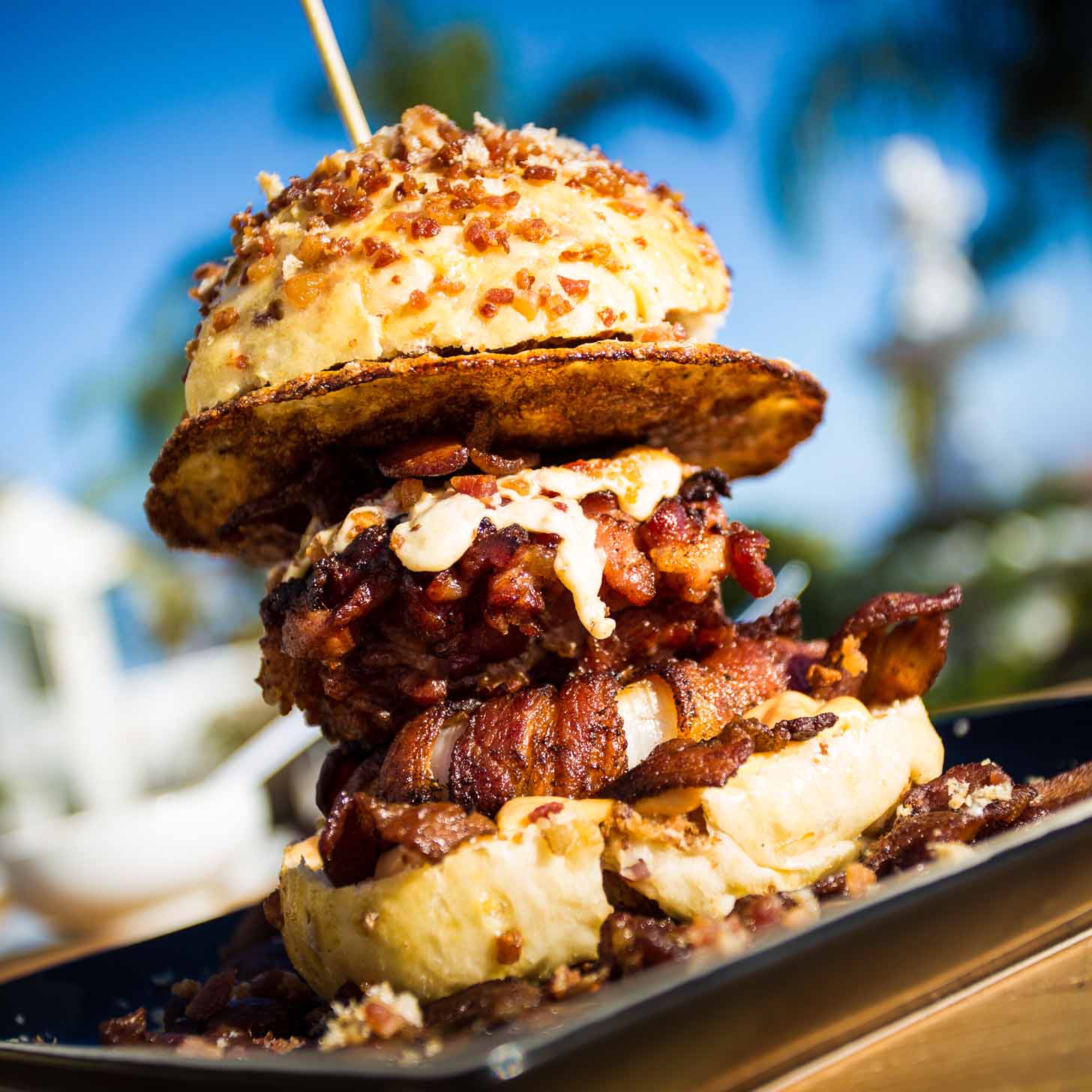 |
[TAG51]A family food blog with hundreds of simple, tested and approved recipes. Find easy step-by-step photo cooking instructions and video recipes. |
 |
[TAG52]This veggie-loaded broccoli cheese soup recipe is perfectly velvety and creamy without using heavy cream. Instant Pot, Crock-Pot and stovetop options all |
 |
[TAG53]This winter farro salad recipe is made with the most delicious blend of seasonal fruit, greens, nuts, crumbled cheese and tossed with a vibrant orange ginger |
 |
[TAG54]find out hundres of delicous food recipes |
 |
[TAG55]This lovely white wine sautéed mushrooms recipe is quick and easy to make, full of rich savory flavors, and can pair well as a side dish with many different |
 |
[TAG56]This traditional Swedish meatballs recipe is bursting with rich, savory flavors and topped with a creamy gravy. Always so comforting served over mashed |
 |
[TAG57]The food blog with mostly healthy recipes made with real, whole foods inspiring more people to get into the kitchen and cook something good. |
 |
[TAG58]This classic Irish coffee recipe is easy to make with 4 ingredients in just a few minutes. Always so warm and cozy! Let’s warm up with a hot mug of Irish |
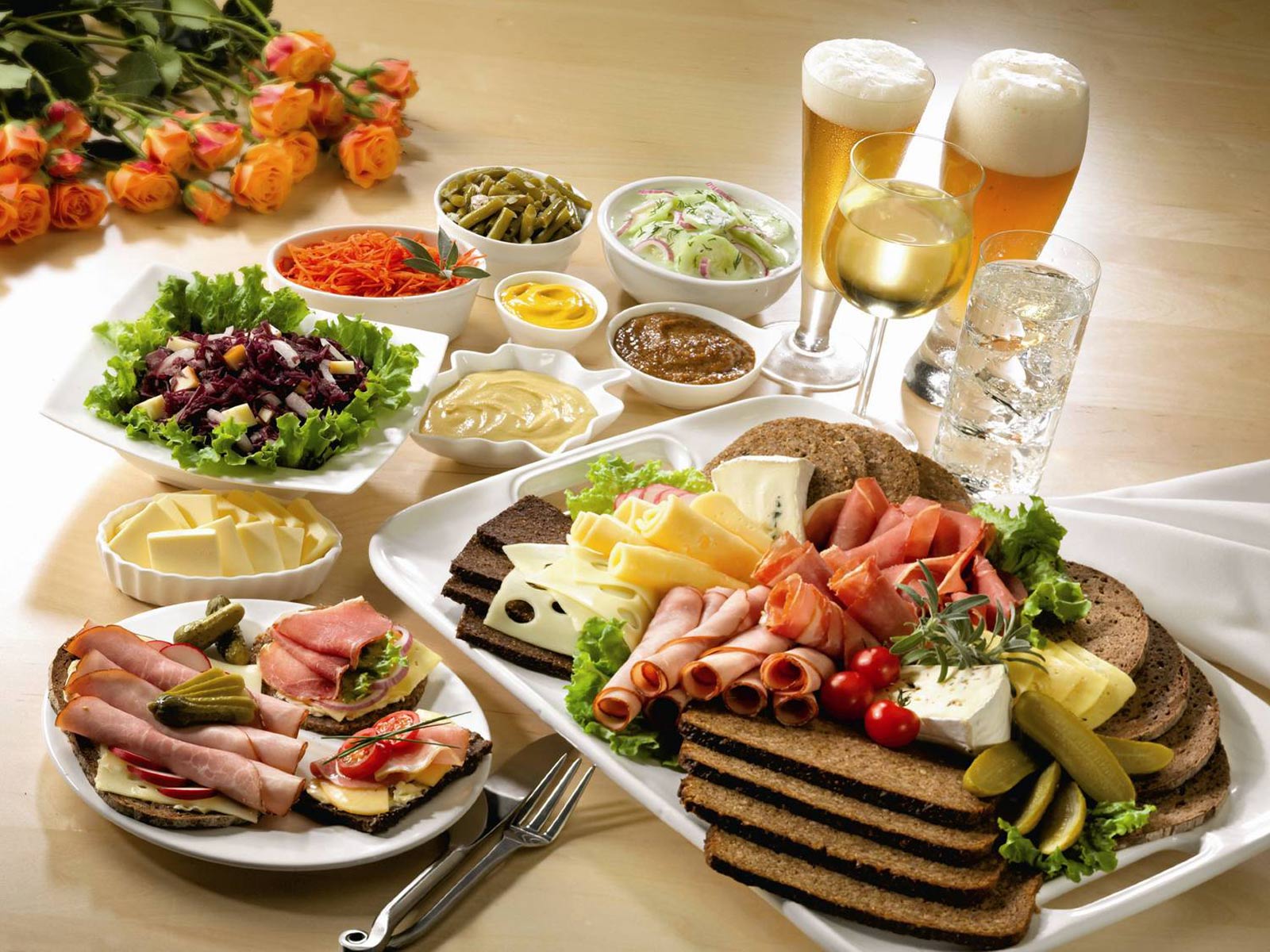 |
[TAG59]A food blog with hundreds of quick and easy dinner recipes. Classics done right, incredible one pot recipes, Asian takeout at home and holiday feasting! |
Did you miss our previous article...
https://belovedsaffron.com/recipes/crispy-airfryer-bagel-bites
.png)





